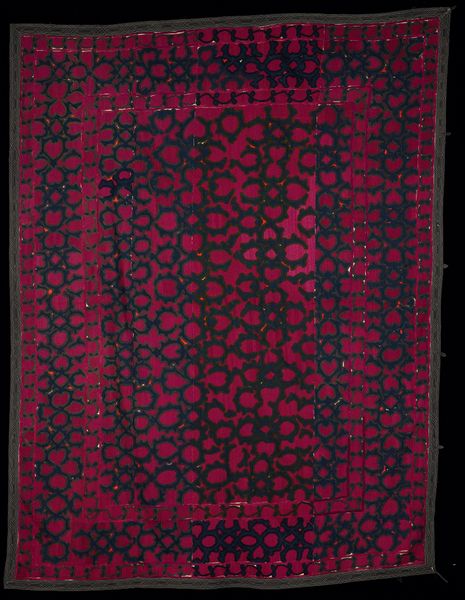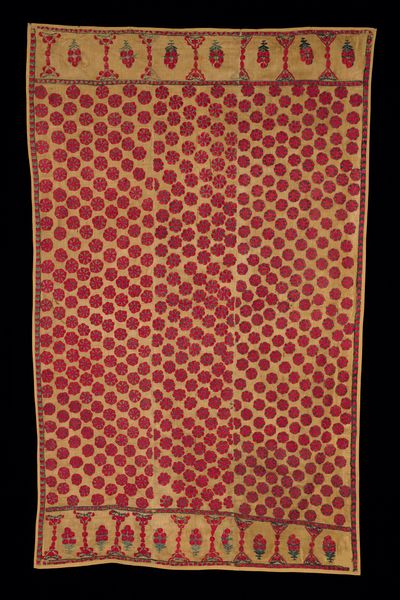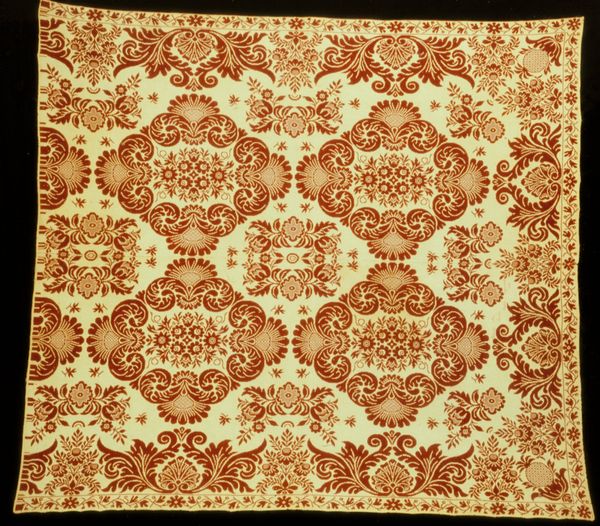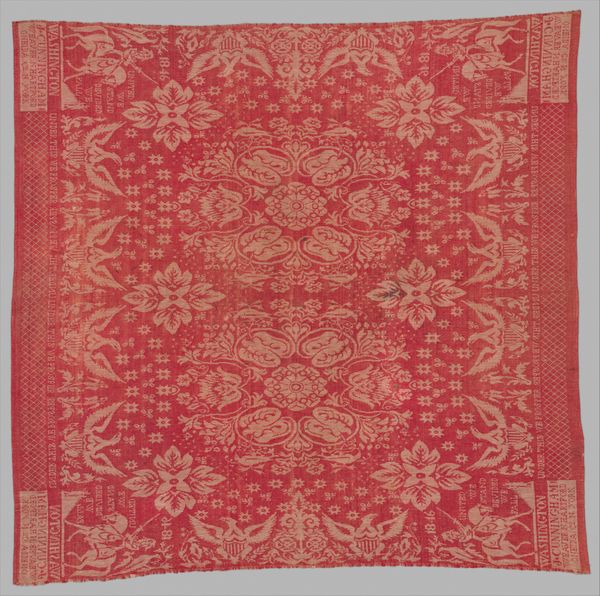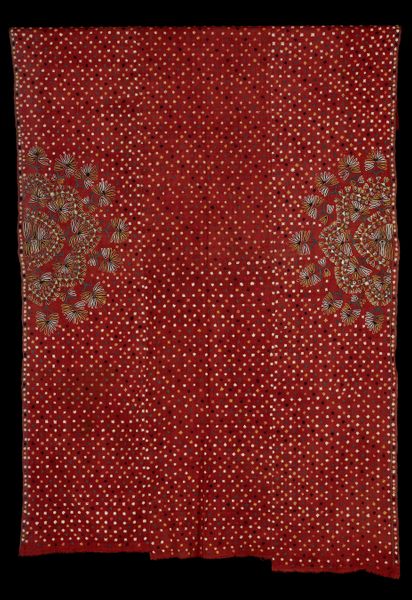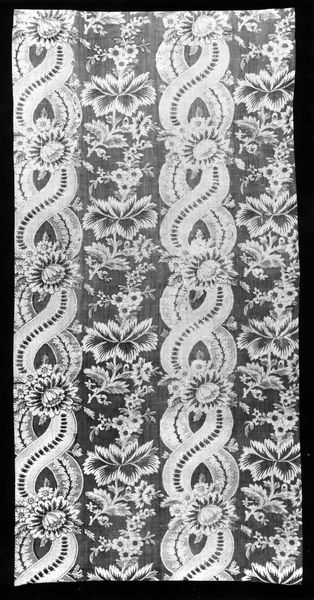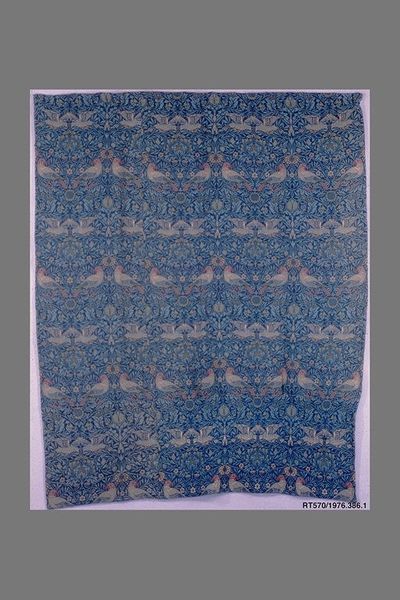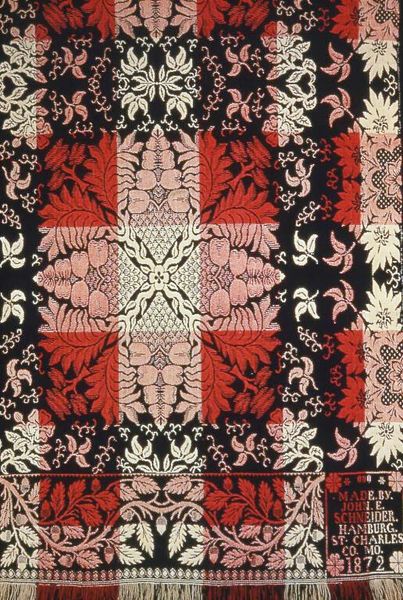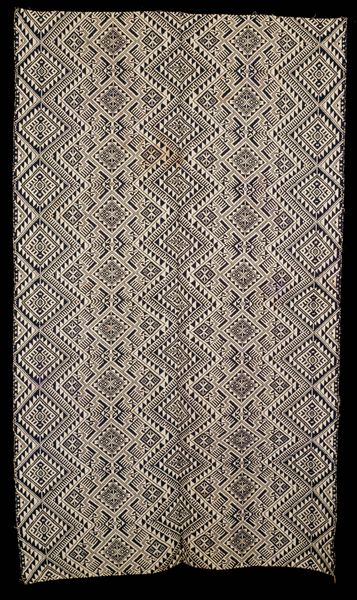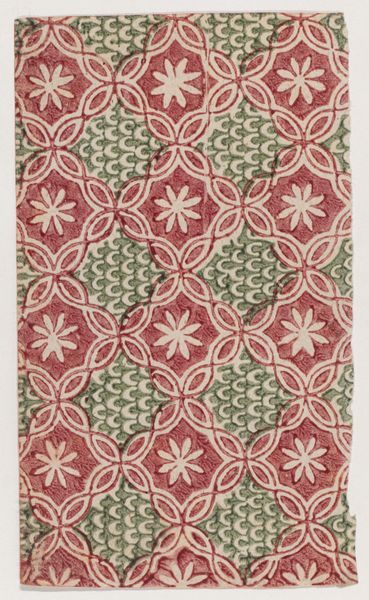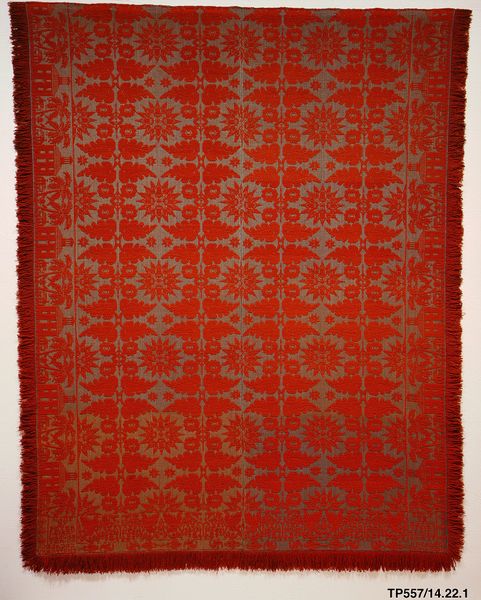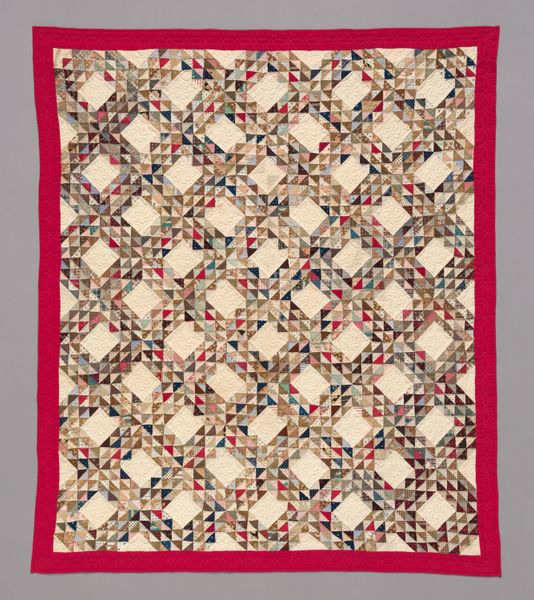
weaving, textile
#
organic
#
arts-&-crafts-movement
#
weaving
#
textile
#
organic pattern
#
england
#
textile design
#
decorative-art
Dimensions: Curtain: 106 x 51 in. (269.2 x 129.5 cm) Tieback: dimensions unrecorded
Copyright: Public Domain
Curator: Welcome. Today, we're looking at William Morris's "Curtain," created between 1879 and 1882. It's a woven textile design currently residing at the Metropolitan Museum of Art. Editor: My first impression is of organized chaos. A rich, almost overwhelming surface. The repetitive patterns draw me in, but the intensity of the single color makes it quite bold. Curator: Indeed. Morris's design philosophy strongly emphasizes the flatness of the picture plane. We see that here in how the design refuses any illusion of depth, preferring to exist as a dense, intricate surface. Consider also the rhythmic repetition and symmetry, key aspects of decorative arts aesthetics of the time. Editor: It feels very English to me, reminiscent of illuminated manuscripts and the symbolic language found in medieval tapestries. I detect hares and birds… animals often representing spring, renewal, and earthly delights in older symbolic systems. Was Morris playing with those archetypes, do you think? Curator: Absolutely. Morris revived medieval techniques, seeking to instill them with deeper symbolic resonance. The organic forms reflect his deep love of nature and his political beliefs, harkening back to an imagined pre-industrial era where beauty and craftsmanship reigned. You see a tension arising from that duality. Editor: I love how it speaks to the Arts and Crafts movement's broader mission— to infuse everyday life with art, democratizing beauty beyond paintings or sculptures meant to be hung in gilded frames. He uses a very distinct and traditional formal language, with dense patterns of leaves, birds and quadrupeds like hares and rabbits in formal heraldic compositions to elevate the artistic prestige and convey symbolic meaning. Curator: Precisely. The repeated patterns create an interesting visual tension. It reflects that push-pull dynamic that makes the overall aesthetic so captivating, that harmony which belies his emphasis on the value of handcraft and human creation versus machine printing and the advent of industrial manufacturing. Editor: Looking closer, you realize the depth is not literal but more spiritual or emotional. The animal and floral patterns, rendered in that signature single color, make it feel as if these are potent visual representations of nature. And, given the title, ‘Curtain,’ a threshold opens, calling one in, in a visual parallel. Curator: That layering gives the whole image such intensity. It seems both inviting and overwhelming simultaneously, mirroring that pre-industrial artistic approach. It truly encapsulates his aesthetic goals and political commitments, a feat both grand and beautifully utilitarian. Editor: Absolutely. Examining "Curtain" reminds us how textiles—often deemed functional or ‘craft’ items—are in themselves visual encyclopedias loaded with cultural codes and beliefs.
Comments
No comments
Be the first to comment and join the conversation on the ultimate creative platform.
